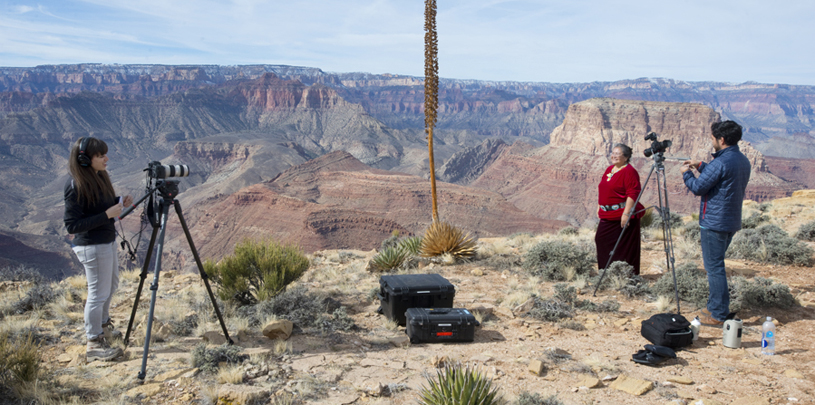
 by Roger Clark, Grand Canyon Director
by Roger Clark, Grand Canyon Director
Navajo President Ben Shelly sees himself “as guardian of the Navajo people and nation.” But the titular president, who was seventh-runner-up in last year’s primary election, does not have the authority to “give the developers the ‘OK’” to build Grand Canyon Escalade, as reported by NBC Nightly News.
Shelly suggests that his approval of the tourist resort and tramway to the bottom of Grand Canyon will help lead to better education and business opportunities for his people. But before the lame duck president can act, legislation must first be introduced to the Navajo Nation Council to support the scheme, which Shelly’s staff secretly negotiated with outside developers[1] during his term of office.
Navajo citizens have only recently had a chance to review terms of the developer-written proposal. Local residents and grazing permit holders must first grant permission for developers to lease their land, as required by Navajo law. And then democratically elected representatives of the Navajo Nation Council must debate and approve the plan, which also requires a $65 million appropriation for roads and utilities.
“A lot of people want to go back to the old ways. You can’t go back,” Shelly replied when asked about growing opposition by his people. In reality, Shelly’s prescribed path to progress is a throwback to past, “top-down” practices, like those that imposed uranium development on Navajo communities more than a half century ago. This time, Renae Yellowhorse and many other citizens are demanding a say in their community’s economic future.
"We are for economic development," said Yellowhorse, whose family still lives and herds cattle on the remote land east of the canyon. "Just not here at this place…. It is my church, it is where I say my prayers. It is where I give my offerings. It's where I commune with the holy ones, the gods that walk along the canyon."
Leigh J. Kuwanwisiwma, Director for the Hopi Tribe's Cultural Preservation Office, joined Yellowhorse and other Save the Confluence family members during the NBC interview. Hopi claims to their cultural homeland also stand squarely in the way of plans imposed by outside developers.
"These landscapes and the canyon and the confluence today are still very, very important to the Hopi people and we'll never let that go," said Kuwanwisiwma. "We're not going to give up on being good stewards of these lands. Never."
Grand Canyon National Park Superintendent Dave Uberuaga agrees with Hopi leaders. He added that if the tramway is built, “it will be a travesty for the American people.”
Grand Canyon Trust’s Native America Program is committed to supporting native groups in sustaining our region’s natural and human communities. In 2012, we accepted an invitation[2] by Save the Confluence families to assist their fight against Escalade developers.[3] The Trust stands together with Navajo, Hopi, Zuni, and all citizens and native people in opposing profiteers’ assault on the Grand Canyon. Once lost, our sacred spaces cannot be replaced.
KEEP THE CANYON GRAND!
[1] Six of the ten Confluence Partners are not Navajo and none live in the area proposed for development. Scottsdale-based developer Lamar Whitmer is the managing partner.
[2] http://www.grandcanyontrust.org/news/2012/10/grand-canyon-trust-to-support-protect-the-confluence-coalition-efforts/
[3] While working in support of the Confluence families to stop the project, our team is also collaborating with community groups to help craft alternative economic development strategies that would bring much-needed jobs to this area of the Navajo Nation without threatening national park resources, sacred sites, or traditional culture. This community-based effort is a public process that continues as Escalade developers pursue private agreements between powerful allies who stand to profit from the proposed project. Please see: http://www.grandcanyontrust.org/news/2014/05/save-confluence-coalition-hopes-halt-escalade-development-project/
80% of Arizona voters support Baaj Nwaavjo I'tah Kukveni National Monument, according to a new poll.
Read MoreThe Colorado River below Glen Canyon Dam is heating up. Find out why.
Read MoreGroundwater pumping at a uranium mine near the Grand Canyon will affect the canyon's springs, scientists says.
Read More